Dec. 11 to Dec. 17
Lee You-pang (李友邦) thought his struggle was over when he returned to Taiwan in mid-December of 1945. After all, he had achieved his dream of helping free Taiwan from the grasp of the Japanese Empire and returning it to the “motherland” of China.
But more trouble lurked under the rule of the Chinese Nationalist Party (KMT), which assumed control of Taiwan when the Japan surrendered at the end of World War II. Three months after Lee’s return, governor-general Chen Yi (陳儀) disbanded Lee’s Taiwan Militia (台灣義勇隊) without discharge orders or pension, essentially hanging out to dry the group of men and women who had spent six years helping the Chinese fight the Japanese.
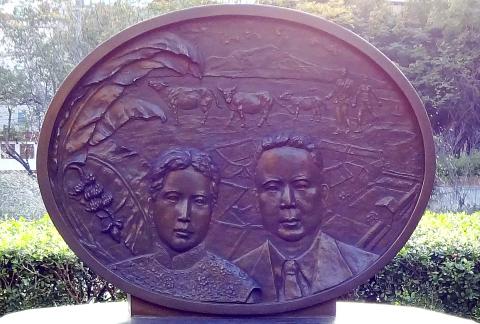
Photo courtesy of Wikimedia Commons
Lee was later jailed on charges of corroboration with the “communist bandits” and inciting rebellion during the 1947 anti-government uprising and subsequent brutal crackdown that would be known as the 228 Incident. His wife and comrade-in-arms, Yen Hsiu-feng (嚴秀峰), saved him that time, but she was in jail when he was taken away again in 1951 on charges of colluding with the Chinese Communists Party (CCP) to overthrow the government.
On April 22, 1952, Lee was executed by the regime he had hoped to support. He was 46. Yen was released from jail in 1965 and spent the next 50 years raising five children, trying to clear her husband’s name and preserving the historic Lee home in New Taipei City’s Lujhou District (蘆洲), which is today open to the public.
“Lee You-pang should have died on the battlefield,” Yen is known to often have said. “Instead, he died in his beloved homeland for which he gave his all.”
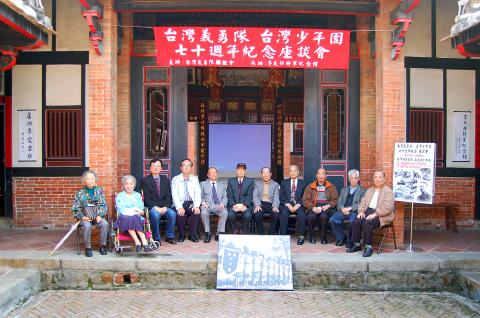
Photo: Wu Chia-yi, Taipei Times
But she adds that she would not hesitate to do it all over again.
ETERNAL REBEL
Lee was a wanted man by the time he was 18 years old, having led student attacks on Japanese police stations in 1922 and 1924. Anti-Japanese sentiment among students was high during that period, especially with the 1921 establishment of the Taiwan Cultural Association (台灣文化協會), which aimed to passively counter Japanese rule by fostering an awareness of Taiwanese nationalism.
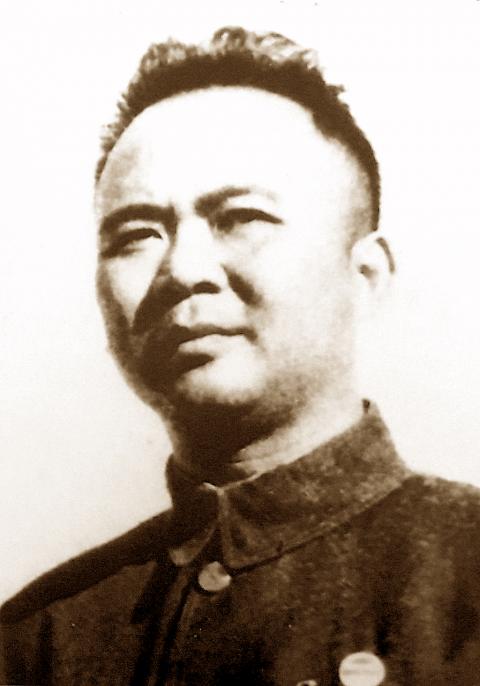
Photo courtesy of Wikimedia Commons
Narrowly dodging arrest, Lee fled to China where he enrolled in the the newly-established Whampoa Military Academy (黃埔軍校) and joined the KMT. During this time he formed the Taiwan Independence Revolutionary Party (臺灣獨立革命黨) — but under this context he meant independence from Japan so Taiwan could return to Chinese rule.
He spent the next few years organizing anti-Japanese activities among Taiwanese living in China, and eventually spent time in Tokyo under the guise of a Waseda University student, networking with local revolutionaries.
Lee’s group was disbanded during new KMT leader Chiang Kai-shek’s (蔣介石) communist purge in 1927 as it was deemed to have leftist leanings. Having nobody else to turn to and with the Japanese on his tail, Lee joined the Communist Youth League of China (中國共產主義青年團) and started teaching Japanese in Hangzhou.
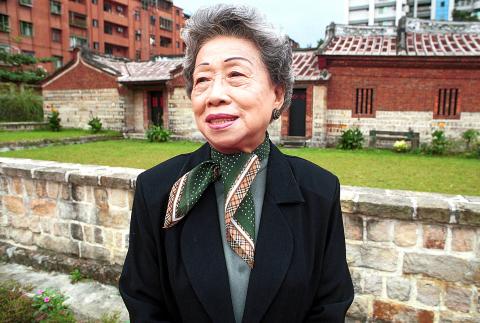
Photo: CNA
In 1932, he was arrested by the KMT and subjected to heavy torture. By the time he was released in 1934, both his younger brothers, also revolutionaries, were killed by the Japanese.
The Sino-Japanese War broke out in 1937, upon which Lee immediately revived his party. In 1938, he formed the Taiwan Militia with the help of the Communists and the approval of the KMT, who were working together against a common enemy.
The following is an excerpt from Lee’s recruitment speech: “Now our great motherland has raised the banner and is resisting the Japanese. This sacred battle has been going on for more than a year now, and this is the perfect chance for us Taiwanese to liberate ourselves. My dear compatriots, how can we continue to watch from the sidelines? How can we bypass this chance to fight with the motherland to defeat our hated enemy for the past 40 years?”
NO PLACE FOR LOVE IN WAR
Around the same time, a 17-year-old Yen left Hangzhou for the battlefield. The only child of a well-to-do family, she begged her father relentlessly for five months before he let her go to war. She showed her bravery with a daring run across the frontlines to deliver secret documents to another camp, spending the last two hours crawling through bushes in the mountains.
Lee and Yen met on the frontlines, and they started spending time together as he offered her Japanese lessons. She turned him down when he proposed, telling him there’s no place for love in war. But Lee was persistent. The pair married in 1941, and she started working for the Taiwan Militia.
The militia’s main tasks were medical support, propaganda and production, but it also saw action, including several raids into Japanese-ruled Xiamen, where they snuck in and put up anti-Japanese posters. It also made use of its members’ knowledge of Japanese to carry out various rescue and reconnaissance missions.
Lee welcomed Taiwanese of all walks of life into his group, including many Communists. This drew the attention of the KMT, which Yen says sealed his fate.
Back in Taiwan, Lee ran the Taiwan branch of the Three Principles Youth Group (三民主義青年團), while Yen helped out and offered Mandarin lessons. When the 228 Incident broke out, Chen asked Lee to broadcast a plea for the people to stop resisting, but Lee refused and criticized Chen for corruption and misrule. Soon, he was arrested and sent to Nanjing.
A pregnant Yen traveled to Nanjing and somehow managed to get an audience with Chiang Kai-shek’s son, Chiang Ching-kuo (蔣經國), who suspected that Lee incited the uprising. Lee was eventually let go and returned to Taiwan to great fanfare.
In 1950, Yen was sentenced to 15 years in jail for meeting a suspected Communist. This time she was unable to save Lee.
EPILOGUE
It was around dusk on Aug. 15, 1945 when Lee and Yen heard the news. A local reporter had run into his house, yelling: “They’ve surrendered!”
Lee and Yen couldn’t believe it. “Who announced it?” they asked.
“We received word from the Americans,” the reporter said.
They jumped up at the same time and hugged each other, fighting back tears. “We’ve won,” Lee shouted as they left their dinner unfinished and ran outside to spread the word.
Taiwan in Time, a column about Taiwan’s history that is published every Sunday, spotlights important or interesting events around the nation that have anniversaries this week.
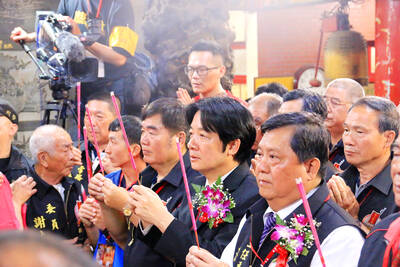
The Democratic Progressive Party (DPP), Chinese Nationalist Party (KMT), and the country’s other political groups dare not offend religious groups, says Chen Lih-ming (陳立民), founder of the Taiwan Anti-Religion Alliance (台灣反宗教者聯盟). “It’s the same in other democracies, of course, but because political struggles in Taiwan are extraordinarily fierce, you’ll see candidates visiting several temples each day ahead of elections. That adds impetus to religion here,” says the retired college lecturer. In Japan’s most recent election, the Liberal Democratic Party lost many votes because of its ties to the Unification Church (“the Moonies”). Chen contrasts the progress made by anti-religion movements in
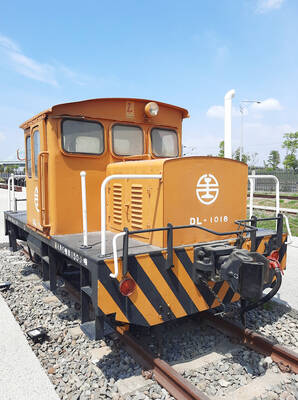
Taiwan doesn’t have a lot of railways, but its network has plenty of history. The government-owned entity that last year became the Taiwan Railway Corp (TRC) has been operating trains since 1891. During the 1895-1945 period of Japanese rule, the colonial government made huge investments in rail infrastructure. The northern port city of Keelung was connected to Kaohsiung in the south. New lines appeared in Pingtung, Yilan and the Hualien-Taitung region. Railway enthusiasts exploring Taiwan will find plenty to amuse themselves. Taipei will soon gain its second rail-themed museum. Elsewhere there’s a number of endearing branch lines and rolling-stock collections, some

Last week the State Department made several small changes to its Web information on Taiwan. First, it removed a statement saying that the US “does not support Taiwan independence.” The current statement now reads: “We oppose any unilateral changes to the status quo from either side. We expect cross-strait differences to be resolved by peaceful means, free from coercion, in a manner acceptable to the people on both sides of the Strait.” In 2022 the administration of Joe Biden also removed that verbiage, but after a month of pressure from the People’s Republic of China (PRC), reinstated it. The American
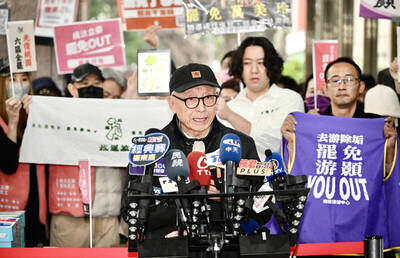
This was not supposed to be an election year. The local media is billing it as the “2025 great recall era” (2025大罷免時代) or the “2025 great recall wave” (2025大罷免潮), with many now just shortening it to “great recall.” As of this writing the number of campaigns that have submitted the requisite one percent of eligible voters signatures in legislative districts is 51 — 35 targeting Chinese Nationalist Party (KMT) caucus lawmakers and 16 targeting Democratic Progressive Party (DPP) lawmakers. The pan-green side has more as they started earlier. Many recall campaigns are billing themselves as “Winter Bluebirds” after the “Bluebird Action”